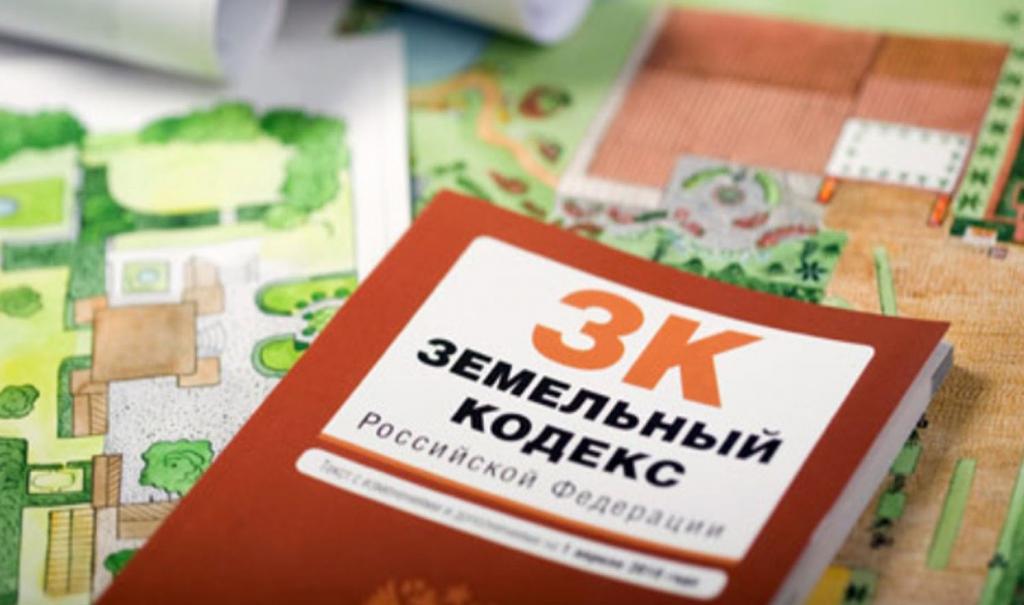Allocation of a land plot is relevant if it belongs to several owners. Shares may appear during inheritance, the use of maternity capital, investment in real estate by several persons. At some point, one of the owners may decide to separate his share from the common property. This process is regulated by Article 11.5 of the Land Code.
Type of ownership and exit of participants
Allocation of a land plot may be carried out if new participants remain allotments, the size of which is not less than the minimum established by the rules of land use. In some territories, the maximum sizes of plots are also provided. Those that are formed in accordance with the rules in force before the introduction of restrictions continue to exist legally. For example, an allotment of land of 28 acres may be in a settlement in which the maximum area is limited to 10 acres if it was formed before the introduction of this restriction. At the same time, it will not be possible to divide this site into two parts, since each of them will be equal to 14 acres, which is an area larger than the maximum size provided for by the settlement rules.
If the co-owners do not agree with what one of them offers, then they can go to court with their new plots that will remain after the allotment. A characteristic feature of this procedure is that after its implementation the old site will remain in shared ownership. This distinguishes the allocation of land from the section. In the latter case, the shares do not remain.

The existence of a right of ownership, among other things, provides for the possibility of disposing of land, including through alienation. In case of shared ownership, the sale may take place upon the offer of redemption of the share to the co-owners of the plot. Only if they do not agree to the offer, using the pre-emptive right of redemption, the share is allowed to offer to other persons.
The area of the allotted allotment may be larger than the remaining in the case when the share of this owner is greater than that of others. The allocation of land allows you to:
- Do not bring the matter to disagreements and conflicts in the future.
- Sell the plot urgently when the need arises.
- Protect yourself from the danger of capturing shares.
This procedure is not difficult, especially if there is a large area. Only at first glance can it seem complicated.
Land for individual housing construction
If the allocation of the site is carried out in order to build a house for living, then the following conditions must be met:
- Possibility of walking passage and access of transport to the site.
- Boundary preparation completed.
- The area complies with urban development standards.
Agricultural land
Allocation of land is carried out in accordance with the law "On the turnover of agricultural land" No. 101-FZ. When approving a project, a border survey will not be required. The issue of allotment is carried out at the general meeting of owners. But there are times when its organization is impossible. Then perform the following steps:
- Turn to a cadastral specialist to conduct land surveying.
- They publish in the media a publication stating that it is necessary to agree on a share. If no objection is received within a month after this, the project may be considered approved.

Conditions
Before allocation of the allotment, a boundary plan for the allocation of the land should be made. As a rule, the initiator of its implementation is forced to bear the costs. If the land survey was ordered by all owners, then the costs are distributed based on the shares.
The boundaries are consistent with the neighbors and further surveying is carried out in the same way as if the site belonged to one person. The only difference is that the agreement must be signed by all the co-owners.
If the area of the share is less than that permitted by the relevant rules, the procedure for the allocation of land is impossible. The only way out of this situation is for other owners to agree for a fee to increase the share of the participant who takes the initiative. In some cases, you can go to court if you can prove that the allocated site can be operated as a separate facility.
If the real estate belongs to the spouses, then it is considered as joint property. A situation may also occur when the land was acquired by two entities, each of which was married. In this regard, shared ownership will no longer belong to two, but to four owners.
If one of the spouses wishes to allocate his share, then before submitting an application for the allocation of the land plot to Rosreestr, he will need to provide written consent of the spouse for this transaction. Perhaps this document will not be requested, as the site will still remain in the family. At the same time, it is better to prepare all the necessary papers so as not to waste time and money on contesting the decision of Rosreestr in case of refusal.

The required package of documents may vary. However, they should all confirm the following points:
- Owners and representatives.
- Their rights.
- Description and status of sites (both old and new).
- Grounds for separation: consent of all co-owners or a court decision.
Plots after the allotment
The most rational allotment is a square. The next on this scale will be considered a rectangle, a trapezoid. Other forms can also be used without any problems. In some cases, they can find advantages even over the square. If the border is broken in the initial section, then this will be preserved in the allocated allotment.
In addition, the old and new sections will have a common border. No disputes can arise here, since the area of the site was clearly established when surveying, and none of the parties can insist on expanding its borders. Thus, if the area of the site, which belongs to three owners, is 33 acres, then the share of each of them is 11 acres.
The provision of land after the allotment involves obtaining a new cadastral number. At the same time, the former site, which has decreased in size, retains its number. Relevant boundaries exist:
- Actually.
- On the boundary plan.
- In electronic format.
Small kinks do not interfere with the use of the allotment, especially in those cases when they are directed outwards.
Easement and Allocation
If the large allotment has a border with common land, for example, in the form of a road, then after the allotment the situation may lead to the fact that the arrival at the new section will be made only through the passage along the old section. Then the owner of the allocated plot has the right to demand the imposition of an easement. This will allow entry and exit legally legally on land owned by another owner.
If the permitted use of the land allows you to build a house, and the owners plan to build, and then connect the necessary communications, then most likely they will insist on that land, which is located closer to the corresponding highways.If the connection is possible only through the former co-owners, then in this case will require an easement.
Speaking of easement, you need to understand the following points:
- It is not a reason for obtaining ownership of the allotment, which is necessary for passage or passage.
- It can also be provided for laying communications.
- Change of ownership does not affect easement.
- A record of its imposition is entered in the register of real estate, the information of which is available to anyone.
Arrest and encumbrance in the allocation of a share
If one of the shares is under arrest, then this is not the basis for fulfilling the allotment of the land plot against the land shares of other owners. There are cases when, by mistake, an arrest is imposed on a whole allotment, even when it was required to do so in relation to one share.
The Land Code of the Russian Federation indicates the following. The shares of the remaining plot that change as a result of the arrest must be re-registered in the USRN. This contradiction will help to resolve the allocation of land. Documents for the procedure are prepared standard. But before submitting the package to Rosreestr, it is advisable to obtain the consent of the person who seized the stake.
If a share is allocated that is under encumbrance, then the consent of the person who required to establish it must be obtained.
There are cases when the registration authorities refuse to allocate the appropriate shares even when the burdener has expressed its consent. However, such a refusal is illegal. In the manner of maintaining the USRN, it is clearly indicated that the allocation of encumbered shares is possible.
It turns out that depending on the situation, the case can develop as follows:
- The share is not under encumbrance - the allocation is carried out without problems.
- The share is under encumbrance - an allotment is possible if the oner agrees to this.
- Share Arrested - Allocation prohibited.
Allotments owned by legal entities
A share that belongs to such a person is allocated on the basis of a statement by the Director General. In order to avoid a situation in which the decision will be disputed, it is advisable to preliminarily approve this issue at the general meeting of the co-owners.

A dispute may arise when the land is owned by several persons. For example, a large enterprise after privatization is divided into several companies. Allocation of own land may be required for economic activities, the establishment of a security system, protection against raider attacks, to change the permitted use of the land and for other purposes.
It also happens that the site belongs to LLC, but one of the participants decided to get out of it and get a share in kind. If this case is prescribed by law, as well as the charter of the organization, then the procedure is possible. However, legally, this will not be an allotment of the site, but its section.
Provision of land from the ownership of LLC in the form of a allotment is carried out as follows:
- They receive an extract from the register, where the powers of the general director are indicated.
- The state duty is paid (it is larger than the fee paid by an individual).
- They appeal to the arbitration court.

Litigation
If the co-owners are unable to resolve the issue of allocating a portion of the plot peacefully, then disputes are subject to consideration by a judicial authority. Usually the court is appealed in order to:
- Decisions on the area of the site that is allocated.
- Settlement of the dispute about its borders.
- Compensation for the disproportion of the area.
- Overlapping easement.
- Infringement of the rights of other non-owners.
Moreover, land disputes are usually attended not only by two parties, but also by a third, which may be:
- Administration of the district or specific settlement.
- Representative of the department of Rosreestr.
These persons are attracted by the court in order to exclude in the future the risk of refusal to allocate a site, since the Rosreestr could object in the relevant case. Therefore, the court takes into account the opinions of third parties when making the decision.
Sometimes, to resolve a dispute, an examination is required. As a result, different selection options with one or another feature can be proposed. If the allotment is impossible, then the specialist can calculate the amount to be reimbursed, which must be paid to the person who wants to allocate the allotment.
Challenging decisions of Rosreestr are extremely rare cases in judicial practice. Despite the strict approach, as a rule, the applicant is exposed to quite feasible requirements for registration of rights.

Questions and answers
When deciding on agricultural land, a concept such as land share is used. A land share cannot be confused with a share on such a plot, since it is a share only on agricultural land.
This type is the only one for transactions with which you do not need to contact a notary (although notary certification is required with all other immovable objects).

Another issue that may arise concerns the payment of personal income tax. But if the term of ownership of the site exceeds 5 years, then nothing will have to be paid.
Thus, the division and allocation of land cover the following areas:
- Civil law (on issues of common ownership).
- Registration procedure and registration.
- Features of the category of agricultural land.
- Tax law.
Each case has its own characteristics and therefore requires an individual approach. The main legal act, the provisions of which are based on, is the Land Code of the Russian Federation.
Conclusion
Allocation of land may be required in different cases. This is a simple procedure under Art. 11.5 of the LC RF, but having a number of features. As a result of it, the applicant receives ownership of the formed allotment and may dispose of it at his discretion within the framework of the law.
